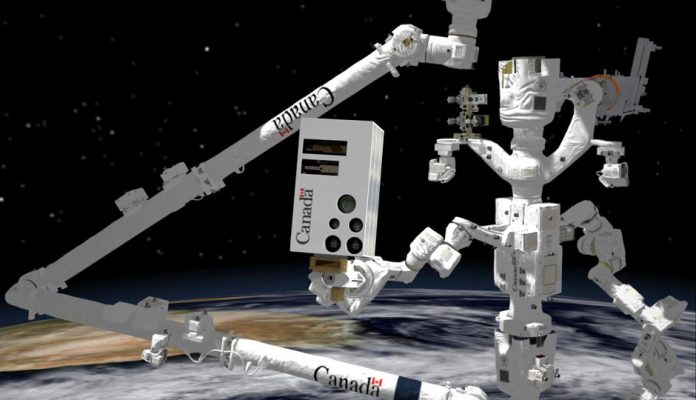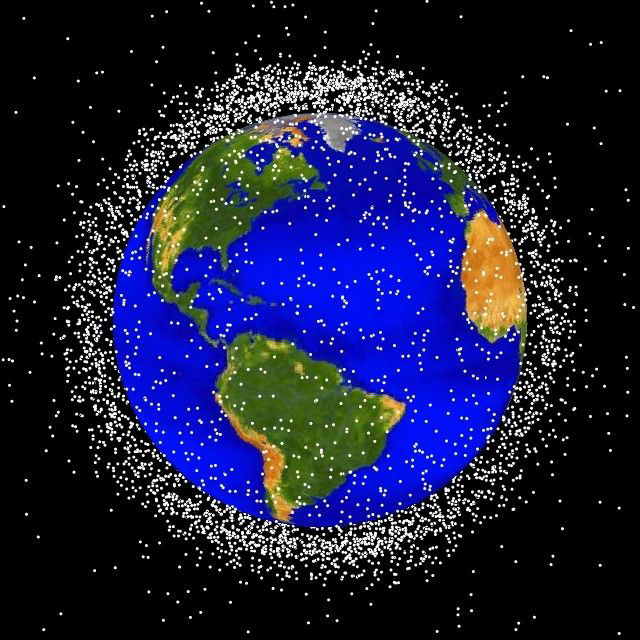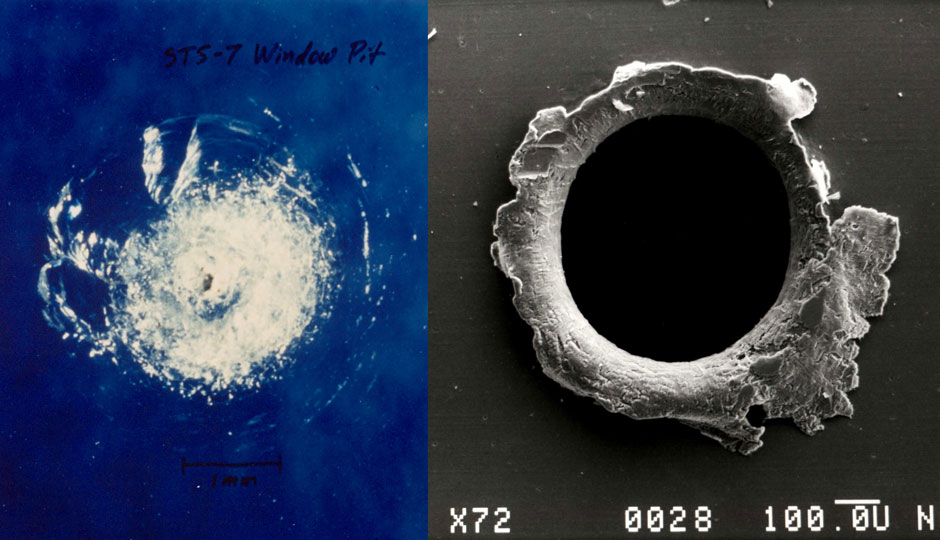The International Space Station (ISS) orbits the Earth at about 28,000 km/h. That’s fast. So fast that even a tiny piece of debris, such as a fleck of paint, could cause serious damage if the two were to collide. Natural objects like meteorites have always posed this threat, but man-made objects, like discarded satellites and the upper stages of launch vehicles, are now estimated in the hundreds of thousands.
Space debris, illustrated here as white dots, travel at speeds up to 17,500 mph: fast enough for a relatively small piece to cause damage
Image: NASA
The ISS is regularly hit by pieces of debris, but the resulting damage can be hard to spot with the naked eye. They can also be in locations that are hidden or difficult to access. Currently, the ISS relies on cameras mounted on the Canadarm2 and Dextre, a Canadian Space Agency robot that helps repair and maintain the space station’s exterior; close up photos are also taken by the crew both on board the station and on spacewalks.
Damage from space debris: Window pit from orbital debris on STS-007 (left) and a damaged panel of the Solar Max experiment (right)
Image: NASA Orbital Debris Program Office
The Government of Canada announced today that it has awarded a $1.7 million dollar contract to Ottawa design firm Neptec Design Group Ltd. to build a new monitoring system for Dextre, slated for launch in 2020. Roughly the size of a microwave, this high tech extra set of eyes for the ISS will combine three sensors:
- A 3D LiDAR laser (a combination of the words “light” and “radar”) to take 3D scans of the space station’s exterior
- A high definition camera
- An infrared camera
Together, these will not only provide detailed information for the safe operation of the ISS as it ages, but it will also give unprecedented views of the ISS. All images will be freely available to the public.
This investment keeps Canada at the forefront of robotics and optics technology for space exploration. Neptec was also previously the company behind imaging sensors designed to assist in automated docking at the ISS.
Can’t get enough of our stories on space? Check out interviews with R2R rockstars Prof. Margaret Campbell-Brown on analyzing meteors and Prof. Gordon Osinski on bringing space technology back to Earth.







































